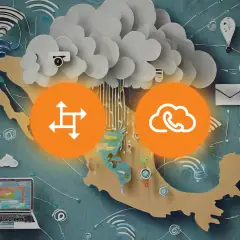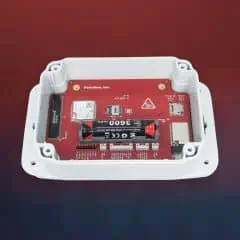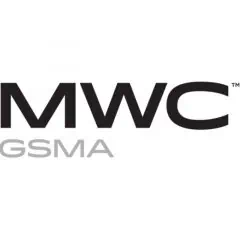Our first app partner is Snom, a leading manufacturer and IP phone pioneer from Germany. We held a joint webinar on December 17 and now invite you to watch the recording to learn how to auto-provision Snom phones via iPaaS and to see a detailed overview of the app partnership program.
Watch the webinar recording to learn how to:
- Activate IP phone auto-provisioning apps for new Snom devices with the help of PortaOne Add-on Mart
- Receive auto-provisioning profiles for new devices within just four weeks for zero-touch deployment of new Snom phones to end users
- Use Snom’s Secure Redirection and Provisioning Service (SRAPS) to deliver factory-sealed phones to end-user and their “plug-and-play” activation, plus advanced provisioning features such as UI customizations
- Become a PortaOne Add-on Mart app partner yourself, and contribute your own IP phone auto-provisioning apps to the Add-on Mart to earn a revenue share for apps activated by other customers

And if you don’t want to watch the whole video right now, here is a brief summary of the topics we covered during the webinar.
Webinar summary
We’ve been using auto-provisioning for a while to enable scaling for CSPs – after all, new clients usually want to use new devices. But our former approach wasn’t working well, as it could take up to six months from the moment auto-provisioning for a specific device was requested by a CSP until it was actually implemented.
Why? Because the PortaOne R&D team had to have the actual device physically available, causing all sorts of transportation-related delays. And when the CPE profile for the device was finally created, the CSP then had to update their PortaSwitch to the latest MR version, as it was the only one that could auto-provision such a device. On top of all that, the old system didn’t work well for the “bring your own device” (BYOD) approach, as it drastically limited the selection of devices that could be used.
For our new Snom partnership, we’ve reduced this delivery mechanism for auto-provisioning apps to just four weeks, with no need for CSPs to send us a device sample or update their PortaSwitch. Auto-provisioning for new devices is now done via the PortaOne Add-on Mart platform. At PortaOne, we think this new approach benefits both the CSPs and the device manufacturers, so we’re choosing this as our preferred approach for covering auto-provisioning needs from here on into the future. All existing phone provisioning modules (the ones that were delivered by adding the module’s code to PortaSwitch) remain available and supported.
Our goal at PortaOne is to help you compete and succeed as a CSP. So we’re now striving toward providing support for as many IP phones as possible. You’ll have the choice and freedom to use your preferred phone manufacturer with auto-provisioning support, as well as the ability to use BYOD programs. As part of empowering our partners and customers with the knowledge and flexibility to do this on their own, we also encourage all device makers – and CSPs too – to become our app partners and bring their own auto-provisioning profiles to the Add-on Mart and earn extra revenue by becoming an app partner and selling custom profiles to other interested customers.
Working with Snom, we demonstrated how this works. First, an app partner (in this case, Snom) develops and submits a set of Add-on Mart apps to the PortaOne Add-on Mart. These fully automated apps are packed into Docker containers and hosted in the PortaOne cloud infrastructure (Oracle Cloud infrastructure).
As a CSP, all you need to do is subscribe to PortaOne iPaaS and activate the apps you want (currently done by an account manager upon your request; a self-care portal will become available in 2021). As a result, you can use auto-provisioning for your chosen Snom devices.
And as our Add-on Mart develops and more device manufacturers and CSPs add more CPE auto-provisioning profiles – and remember, you can do this yourself, too! – the platform will support an ever-growing range of devices.
During the webinar, Snom briefly covered their current line of hardware phones (the first five Snom devices with CPE profiles on the Add-on Mart are desktop phones) and explained their different enhancements and updates (for example, the M90 handset, which features antibacterial housing that can safely be disinfected with alcohol – a handy option for the pandemic).
We also discussed Snom’s secure redirection and auto-provisioning service (SRAPS) – a portal for streamlined zero-touch deploy, advanced secure remote phone provisioning and management, and remote UI customization and firmware administration. In short, this means you can ship boxed devices with fully automatic auto-provisioning to your customers, so all they have to do is plug them in – no need for an on-site engineer to set up the device. SRAPS is complimentary when regular auto-provisioning via PortaOne iPaaS isn’t sufficient and more advanced control is required.
Finally, we ran a joint demo with Snom on how to activate the auto-provisioning for Snom phones. This demo is just a teaser of everything you can expect when the PortaOne Add-on Mart is fully available.
Audience poll results
We asked our webinar audience this question: What role does bring-your-own-device (BYOD) play in your products & services?
Here’s what they said:
- We don’t cater to BYOD; authorized/preselected phones only – 50%
- Many customers are asking for it, but we have not been able to communicate at scale – 33.33%
- We have dedicated BYOD plans – 0%
- All our plans are BYOD; we do not provide/resell phones 16.67%
If you have any questions regarding the app partnership program or PortaOne Add-on Mart, please contact our Sales team – we’ll be happy to help you.


















